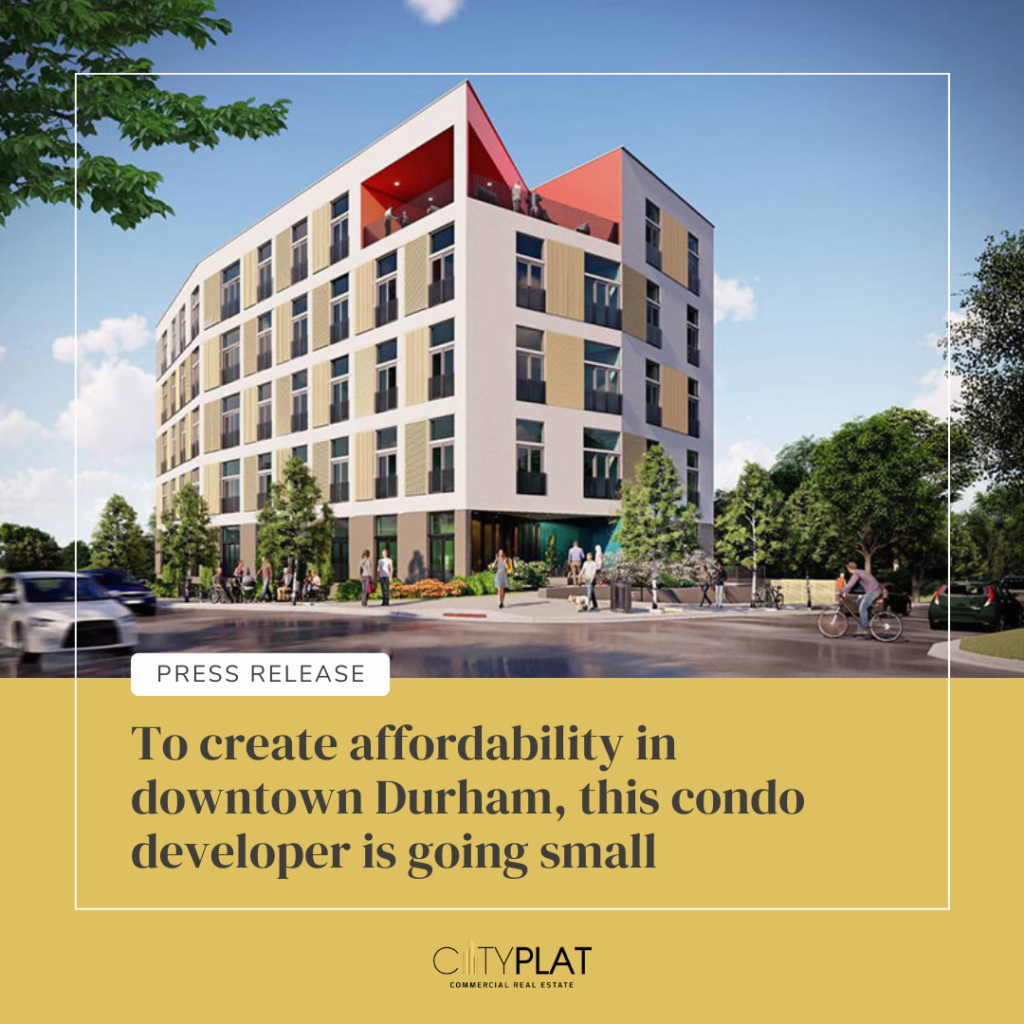
To create more affordable for-sale units in downtown Durham, one developer is going small — really small.
The latest project from architects Scott Harmon and David Arneson, the owners of Durham-based firm ReVamp Durham and Center Studio Architecture, is a condo building with a wide variety of pricing, including many units under $200,000.

Though, to get to that price range the cheapest units are 400-square-foot, studio units — a size reminiscent of the model apartments in an IKEA showroom.
But still that is much cheaper than the average condo being built in downtown Durham, which usually ranges from $300,000 to more than $1 million at some projects underway.
“We are going to be introducing more of those small-unit layouts,” Harmon told The News & Observer last year when he submitted plans for the project. “We are trying to bring a little bit of diversity to the market, so that a wider range of people can have options downtown.”
At the five-story, 43-unit building at 600 S. Duke St., buyers will have several options for getting a unit below $200,000, Harmon said.
For buyers that need a parking space, there are eight condos under $200,000. For buyers that don’t need a parking space, there are 15 condos listed under $200,000, Harmon said in an email. Buyers can receive a credit on their purchase price if they forgo a parking spot, Harmon added.
In the rest of the building, which will be called City Port, a one-bedroom, one-bath unit will run somewhere between $266,000 and $336,000, while two-bedroom units will cost between $333,000 and $448,000
The most expensive condos will be three-bedroom units, which will cost somewhere in the mid $500,000s.

The City Port building is part of a wave of residential projects targeting the west side of downtown Durham.
A development group is currently building more than 60 townhomes just a block down Yancey Street from Harmon’s condo project. A national apartment builder is looking to add more than 300 apartments at the former Crown Park Hotel site on the other side of Duke Street.
The city is using tax credits to build an affordable apartment project on Jackson Street by the Durham Station. And the city also agreed earlier this summer to sell a 4.4-acre site that is now the home of the Durham Police Department headquarters to a developer that promises to include some affordable housing in its future plans for the land.
On top of that, Capitol Broadcasting plans to expand the American Tobacco Campus by developing the University Ford property on Willard Street, though no specific plans have been released for that project yet.
The area stands to look radically different in a few years.
On the other side of downtown, Harmon is also behind a project that could create smaller, but cheaper, residential units — though that project is an apartment building.
Harmon and another partner, Paul Smith, recently submitted plans for a 171-unit apartment building on a former used-car lot at 614 Rigsbee Ave., located across the street from the Liberty Warehouse apartments.
While the pricing and sizing of the units in that building haven’t been announced, he told The N&O in March that the goal of that project is about “zeroing directly on those people that have been left out of the downtown revitalization.”
With a surging population and a spike in rents over the past five years, affordable housing has become one of the leading political issues in the city. The city is currently debating the topic of allowing more density in its neighborhoods, with Mayor Steve Schewel often repeating the mantra of “either we build more houses or the price of housing is going to go through the roof.”
And despite the growth the city has seen in downtown, the number of housing units hasn’t kept up with population growth, with an estimated 20 people moving to the city a day. From 2010 to 2015, there were 10,774 new households in Durham, but only 9,629 new housing units, according to “Expanding Housing Choices,” a new project of the Durham City-County Planning Department, The Herald-Sun has previously reported.
Harmon has said previously that he believes the city still has a way to go before it meets the demand for housing in the downtown core.
“We have done a lot of research for this project and the structural economics of Durham are ideal,” Harmon said of the Rigsbee project. “Part of what is driving the (housing) crisis here is we are not adding enough housing units. People want to live downtown, and there is no data to support that we are getting anywhere close to the bottom of that market.”
The Herald Sun, BY ZACHERY EANES